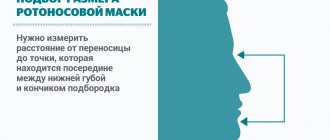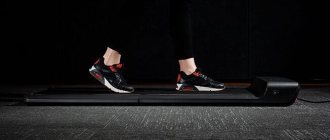The role of music during training was first thought about back in 1911. Then the American scientist Leonard Ayres found that cyclists rode faster when music was playing, and slower when there was complete silence. Today, you won’t surprise anyone with headphones in the gym, and in music services you can find separate playlists for each sport for every taste. Let's figure out how your favorite tracks affect the brain, whether music really improves the effectiveness of training, and which genres are most often chosen for different types of exercise. Wellness coach and “Championship” expert Andrey Semeshov
.
Can music make your workout more effective?
Sometimes it can be difficult to sit still when your favorite song is playing on your speakers or headphones. Some immediately begin to sway to the beat or beat out the rhythm with their fingers, others begin to dance. There is a very real explanation for this. The fact is that in the human brain there are direct connections between auditory and motor neurons. Listening to music that you enjoy stimulates areas of the brain that play an important role in motor coordination. Some researchers believe that people's instinctive desire to move to the beat is due to this "neural interference."
Dr. Marcelo Bigliassi
from the University of Sao Paulo in Brazil has long studied the relationship between audiovisual stimuli and physical state during exercise. He concluded that listening to music promotes a positive state, reduces feelings of fatigue and increases the effectiveness of exercise. Dr. Bigliassi also believes that the brain may downplay feelings of tension. Under the influence of music, it changes the nerve impulses sent to working muscles and blocks negative bodily signals.
Photo: istockphoto.com
Thus, the music seems to compete with the overload impulses that the body sends and forces them to fade into the background. The right playlist won't make you feel less tired in the gym, but the encouraging tunes of your favorite artist will definitely help you forget about fatigue - at least for a while.
Despite the results of Bigliassi's research, many athletes and coaches prefer not to be distracted by music and practice in silence.
Andrey:
Music is more about sometimes allowing, for example, to go beyond the limits of your current physical capabilities. For example, powerful hard rock literally forces you to squeeze out one more repetition through “I can’t.” The secret is to leave music as the last bullet. That is, do not insert headphones during every ordinary strength training session, but take them out of your bag only on special occasions.
How to lose weight in 4 minutes a day? Quick fat burning workout
Training on an empty stomach. Should you run on an empty stomach?
The effect of music on the body
Music is essentially a way of communication between performer and listener . While listening to music, feelings and thoughts are transmitted, which, of course, even affects our body. Nobody is interested in music that does not evoke any feelings or emotions.
Music affects several aspects of the human body, such as cardiovascular health, mood, and athletic performance . We perceive music as sound waves , but have you ever wondered how the body can “decipher” them? [1]
The whole process from transmitting a sound wave to an impulse to the brain is quite complex. Sound waves impact a part of the ear called the eardrum . The sound pressure causes the eardrum to vibrate, which moves towards the middle ear .
Sound vibrations pass through the auditory ossicles into the cochlea. The fluid in the cochlea, containing 10,000 to 15,000 hair cells, begins to oscillate.
This stimulates the movement of the hair cells and they generate electrical signals that stimulate the auditory nerve. At the end of the cochlea there are cells that transmit information about low-frequency sounds, and at the beginning of the cochlea there are cells that transmit information about high-frequency sounds. [12]
Music and think tanks
Music activates several brain centers that perform a special function, and our brain responds to music [3] [4] [5] [6]:
- Temporal lobe – This part processes sound , and thanks to the language center located here, we appreciate music. It is the primary auditory cortex in this area that processes incoming information.
- Frontal lobe – used for thinking, planning and decision making. We can improve its performance by listening to music.
- Wernicke's area - located in the temporal lobe, allows you to understand spoken and written speech, thanks to this part of the brain enjoys music , and also analyzes it.
- Frame area – allows a person to speak and express music . You can improve your communication skills by playing a musical instrument.
- Nucleus accumbens - the nucleus accumbens - is responsible for the perception of pleasure and releases dopamine, therefore plays an important role in the development of addiction. Music in this section increases dopamine . So if you believe that music is your drug , here's proof that it really is, because cocaine also increases dopamine levels.
- Putamen - plays a role in the perception of rhythm and regulates human movements. Rhythm is very important when doing exercises. One theory suggests that this part "scans" musical rhythms.
- The amygdala produces and processes emotions, causing you to experience pleasure or fear . Contains 3 layers of neurons, the top layer responds to faces, sounds and music, especially positive music.
Dopamine release while listening to your favorite tracks
Sometimes a song heard at the right time can set your mood for the whole day. Or vice versa: sad tunes accidentally included in the playlist will discourage not only training, but also leaving the house. It's all about dopamine - the so-called happiness hormone.
To test this, an international team of researchers conducted an experiment. It involved 27 volunteers, who were divided into three groups. The first group was given a drug that increases dopamine production, the second was given a drug with the opposite effect, and the third was given a placebo. After which all participants listened to their favorite tracks. As a result, the first ones immediately got goosebumps while listening, and the level of activity in the area of the brain responsible for motor functions increased sharply. One of the authors of the study, Laura Ferreri, assistant professor of cognitive psychology at the University of Lyon, said:
In everyday life, people regularly seek to listen to music, sing or dance, although these activities may not seem important for survival. We study how the brain structures sequences of sounds and turns them into pleasant and rewarding experiences.
How does music affect running?
As a result of evolution, the human brain has learned to automatically block any efforts that are not directly related to survival. American psychopharmacology even has a special term for this phenomenon - evolutionary mismatch. To put it bluntly, while we live in 2019, our brains are still tuned to prehistoric mode in some aspects. This is where those days come when it seems like nothing will force you to train. Nothing but a playlist you like.
Photo: istockphoto.com
Musical energy is not a joke or a myth. This is confirmed by research on the role of music during sprinting. Scientists from Brazil and Spain have found that their favorite songs help runners tune in to the distance and more easily withstand the load. The American Association of Track & Field (USATF) practically equates music to a separate type of doping and, since 2009, has allowed the use of players only during amateur marathons that do not provide awards.
In 1998, athlete Haile Gebrselassie from Ethiopia explained his record in the 2000-meter race with music. According to him, one of the hits of the nineties helped him speed up - the song “Scatman” by John Scatman. It was this song that Gebrselassie sang during the race.
Conclusion: the more dynamic the music, the faster the heart rate, but the lower the perceived load
“We were able to find that listening to high-tempo music during training caused an increase in heart rate to the highest level and a decrease in the level of perceived exertion compared to not listening to music,” says co-author Luca Ardigo, a biomechanics specialist from the Italian University of Verona in press release on the results of the study. “This means that participants perceived exercise as less challenging, even though it was more beneficial in terms of enhancing physical fitness.” “In this study, we examined the influence of musical tempo on the training process, but in the future we would also like to study how other parameters of music (melody, genre, lyrics) influence the duration of work under load and the level of training intensity,” says Ardigo.
This study shows the benefits of music under stressful conditions, as well as during endurance and high-intensity training. The findings suggest that the beneficial effects of music are more likely to occur in endurance exercise. Therefore, music can be seen as an important tool for stimulating people engaging in low-intensity physical exercise.
Does music have a negative impact on training?
Some researchers are of the opinion that music has a negative effect on training results. In their opinion, a person cannot fully concentrate on any one task. Sports sociologist Jim Denison thinks so. He is sure that headphones interfere with concentrating on running and deprive him of the meditative component. Denison also thinks that a person gradually gets used to a certain sound accompaniment so much that he can no longer train without music.
We have lost the ability to “be in the moment” in favor of multitasking. And listening to music or podcasts during training is one of its forms: neither one nor the other is performed efficiently.
Andrey:
I have little idea how you can combine working with a client and listening to music during personal training. If a person turns to a trainer, then, in my opinion, it would be logical to be in constant communication with him during classes. I myself rarely take out my headphones during strength training, only a few times a year. When you really have no strength at all, but you need to push yourself.
Thoughts that prevent you from exercising
A vacation you can't do without. Why do we need recovery training?
What to listen to music on
Even the perfect playlist won't be useful if you listen to it on anything. We will tell you what you should pay attention to and offer options for different conditions: in the hall and at home.
In the hall
In gyms there is always background music playing, visitors talking, and exercise equipment making noise. Therefore, it is worth paying attention to good headphones that will not conduct sound from outside.
The next requirement for sports headphones is water resistance and the ability to quickly and effectively wash them off sweat after intense exercise. Special attention should be paid to the ergonomic properties and strength of the cable - the headphones should not fall out when you move, and the cord should be protected from wear. Of course, the sound must be rich and high quality.
These requirements are fully met by the Philips ActionFit NoLimits SHQ3405 headphones.
The headphones have a customizable ear hook and come in a variety of ear pad sizes, so the SHQ3405 can fit anyone. The cable is reinforced with Kevlar, and the weight of these headphones is only 7.1 g.
To control music, you don’t need to take out your smartphone—the necessary buttons are on a special switch. There is also a hidden microphone for answering calls.
The degree of protection of the switch with the microphone is IPX2, the headphones themselves are IPX4. This means that drops of sweat will not harm them in any way, and after an intense workout they can be rinsed with water.
Buy Philips SHQ3405
At home
At home, you can avoid wires and ear pads and use a speaker instead of headphones. An excellent option would be the Philips BT7900 waterproof Bluetooth speaker with a proud 14 W of power on board.
It is suitable for training both at home and outdoors. The battery will last for 10 hours of music, and the dimensions of 201 × 71 × 72 mm will allow you to carry the speaker not only in a backpack, but even in a small handbag. There are three color variations.
And a little about the most important thing: sound and cost. The speaker plays powerfully, deeply and in detail, and is cheaper than many branded analogues with similar functions.
Buy Philips BT7900
Deep house is for interval, ambient is for yoga
Although the overall effect of music on training can be simplified to the formula “like it means it helps,” different genres will work well for one type of exercise and interfere with another. It’s unlikely that anyone will do stretching to dubstep or push weights to Russian classics.
When choosing a playlist for training, it is quite possible to listen to public opinion. For interval training, it is better to choose something rhythmic and fairly fast. For example, funk, reggaeton, hip-hop or deep house. Tracks with bright, energetic beats will help you overcome the lazy “I don’t want to” and, perhaps, do one more set in an exhausting exercise.
When choosing music for yoga or stretching, it is better to give preference to calm and smooth compositions. Ethno-electronics, electronics, ambient music are well suited.
If you don’t part with your player (waterproof, of course) even in the pool, then you should choose the golden mean - rhythmic, but not fast songs. For example, lounge, reggae, indie, pop, soul, funk or pop rock.
When creating the perfect workout playlist, you can (and should) rely not only on the genre, but also on the tempo of the songs. It is measured in BPM - beats per minute - beats per minute. Determined using special applications. For intense training, tracks with indicators in the range of 130-180 BPM are considered ideal. But in the end, it all depends on the specific song and the person's preferences.
The faster the tempo of the music, the more work is done
A faster tempo of music increases the performance of physical training on a bicycle ergometer and the associated physiological reactions. These results were obtained by British researchers from the Research Institute of Sport and Physical Education in Liverpool.
Professor Waterhouse and colleagues examined the effect of music tempo on the performance of 12 healthy students with a normal level of physical activity on a bicycle ergometer. They pedaled and listened to 6 different music tracks that varied in tempo. They also listened to each of the 6 tracks in 3 versions - in the original, 10% faster and 10% slower.
When listening to music with a faster tempo, whether it was initially fast or artificially sped up, participants performed more work. Speed, power and cadence increased. With artificial deceleration, these parameters decreased.
Subjective parameters such as perceived physical exertion, comfort, and whether or not the music was liked or disliked were also measured. All of these parameters were also higher for music tracks with a faster tempo.
The perfect running playlist
Compared to other exercises, running is monotonous and not always fun. This opinion is shared by wellness coach Andrey Semeshov. He knows how to combat boredom and add variety to your cardio workouts.
Andrey:
I can't run without music at all. This activity seems too monotonous to me, and the music is distracting. A few years ago, I discovered the podcast Podrunner, created by writer and DJ Steve Boyett. You can choose a soundtrack to suit any tempo and duration of cardio. I advise you to try it if you have no prejudice towards electronic music.
Photo: istockphoto.com
In addition, on the project website you can sort tracks both by bit frequency and by the athlete’s level of training. For example, for beginner runners, Podrunner offers this mix:
- Giovanni Damico – Bernauer
- SP – Storm
- Lenny Barnes – Broken Glass (Instrumental Mix)
- Lex Loofah – Super Cali
- Robien M – Autumn Rain
- Soulboy – The Connection
In the rhythm of the city: playlists for running from the best DJs










